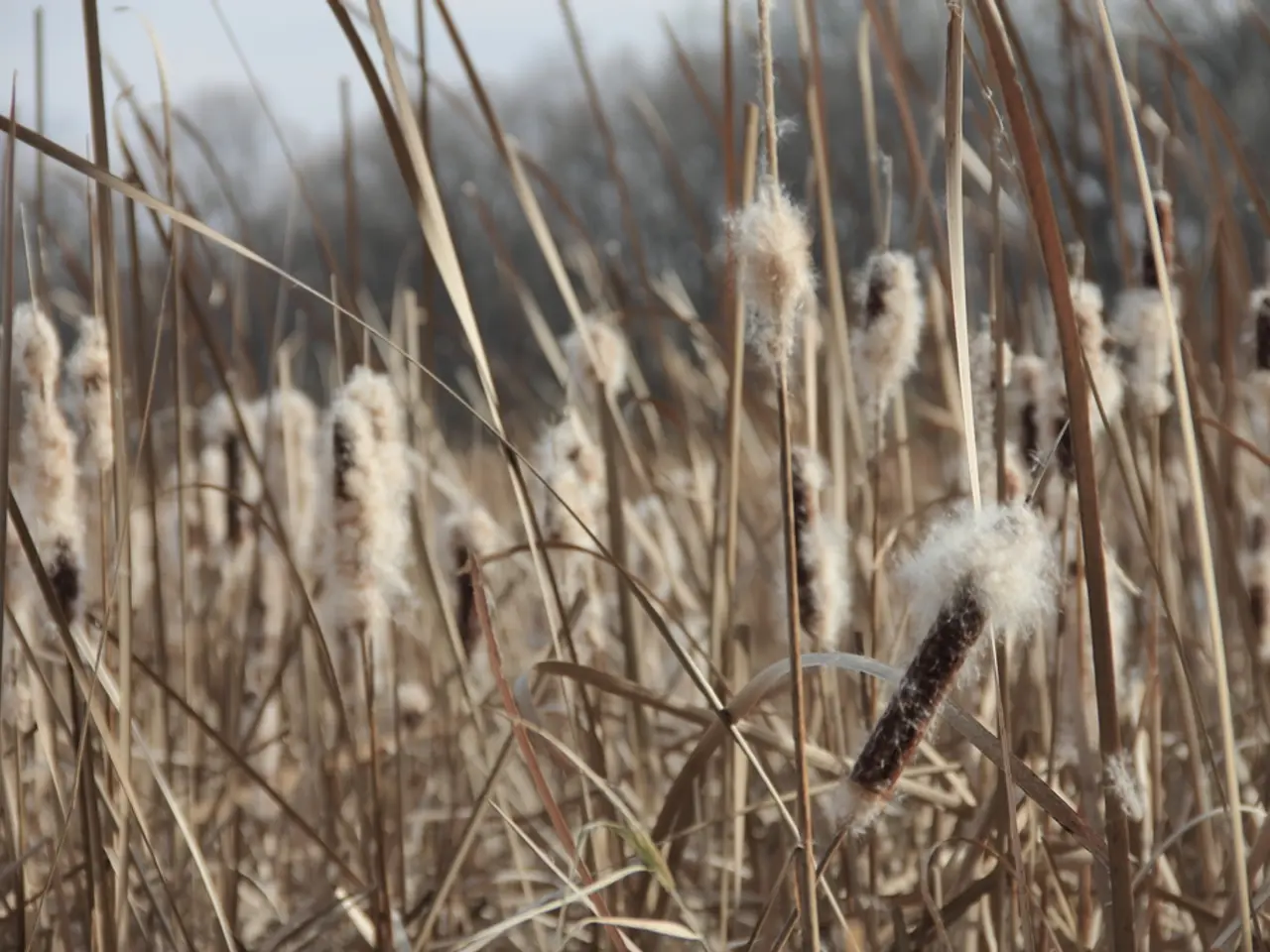Uncovering the Reason Behind Cotton's Title as the Globe's Filthiest Farm Product
In the world of textile manufacturing, few industries have as significant an impact as the cotton industry. However, this impact is not always positive, with the conventional cotton industry being associated with numerous environmental and societal issues.
Environmental Issues
One of the most pressing concerns is the industry's excessive water consumption. Conventional cotton cultivation uses vast water resources, leading to water scarcity and affecting drinking water availability. This overuse contributes to ecosystem destruction, such as the drying up of the Aral Sea.
The industry also employs huge quantities of pesticides and insecticides, causing contamination of water systems and soil degradation. In fact, cotton consumes more pesticide than any other single crop, despite being grown on only 2.5% of the planet's agricultural land. These chemicals include organophosphates, neonicotinoids, and pyrethroids, which are harmful to both ecosystems and human health.
Soil erosion and loss of fertility are other consequences of chemical inputs in cotton farming. Soil erosion at a rate of 12–18 tons per hectare annually, and a reduction of beneficial soil organisms such as earthworms by 72%, lead to declining soil health and productivity.
Moreover, the expansion of cotton acreage into natural habitats destroys biodiversity and endangers species. For example, in Brazil’s Cerrado, cotton farming is increasingly encroaching, posing a threat to unique biodiversity.
Lastly, conventional cotton farming contributes markedly to climate change due to chemical use and land use change.
Societal Issues
The health risks to farmers and workers in the conventional cotton industry are substantial. Exposure to toxic pesticides causes acute and chronic health problems, including respiratory issues and skin allergies. About 500 people die daily worldwide from pesticide poisoning linked to agriculture.
Poor working conditions are another issue, with conventional cotton farms often lacking adequate labor protections. Workers are exposed to harmful chemicals without proper safety measures.
Economic and social impacts also arise from soil degradation, which reduces crop yields, forcing farmers into deeper poverty and pushing for further deforestation or agricultural expansion. This perpetuates a cycle of environmental degradation and social hardship.
In summary, the reliance on synthetic chemical pesticides and fertilizers, immense water use, and harmful farming practices in conventional cotton production pose serious concerns for environmental sustainability and human health worldwide. These problems have fueled interest in organic and more sustainable cotton alternatives that avoid synthetic chemicals and prioritize water conservation.
Note: The article does not include information about Bt cotton, organic cotton yield, water consumption for a cotton t-shirt, cotton farmer debt, fertilizers spilling into the sea, US taxpayer subsidies for cotton farmers, nitrates transformed into nitrous oxide, organic European flax linen, and the impact of the elimination of the bollworm by Bt cotton.
[1] Source: World Resources Institute (2018) "Cotton and Water: A Global Analysis" [2] Source: United Nations Environment Programme (2019) "The Environmental Footprint of the Cotton Sector" [3] Source: Textile Exchange (2017) "Global Organic Textile Standard (GOTS) Product-Level Certification" [4] Source: Pesticide Action Network (2020) "Cotton and Pesticides"
- The conventional cotton industry's excessive water consumption is a significant environmental concern, leading to water scarcity, affecting drinking water availability, and contributing to ecosystem destruction like the drying up of the Aral Sea.
- In addition to water usage, the industry's reliance on pesticides and insecticides causes contamination of water systems and soil degradation, with cotton consuming more pesticide than any other single crop.
- The use of harmful chemicals for cotton farming results in problems such as soil erosion and loss of fertility, reducing soil health and productivity, and destroying biodiversity when cotton acreage expands into natural habitats.4.health risks to farmers and workers in the conventional cotton industry are substantial, with exposure to toxic pesticides causing acute and chronic health problems, and poor working conditions often lacking adequate labor protections.




